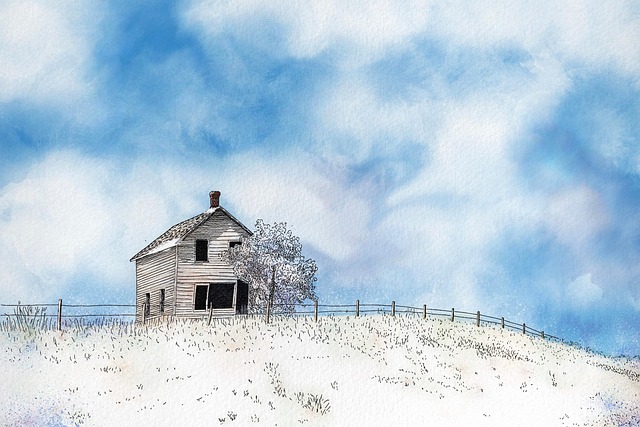Fencing a vast property doesn’t have to break the bank. With thoughtful planning and innovative solutions, cost-effective fencing can enhance security, privacy, and aesthetics without straining your budget. This article guides you through understanding the unique needs of large properties, exploring affordable alternatives to traditional fencing, and showcasing durable materials that require minimal maintenance. We also offer design inspiration for expansive spaces and practical installation tips to ensure longevity and maximize savings.
- Understanding Large Property Fencing Needs
- Traditional Fencing vs. Cost-Effective Options
- Durable and Low-Maintenance Materials
- Design Ideas for Large Spaces
- Installation Tips for Longevity & Savings
Understanding Large Property Fencing Needs
Fencing a large property presents unique challenges compared to smaller plots due to its extensive perimeter and diverse landscape features. Effective fencing solutions for expansive areas should address both aesthetic and practical considerations, such as privacy, security, weather resistance, and visual appeal while blending seamlessly with the surrounding environment. The terrain’s topography—be it rolling hills, valleys, or dense forests—influences the choice of materials and installation methods, demanding tailored approaches to ensure structural integrity and longevity.
Additionally, large properties often require fencing that accommodates various functions, from defining property lines to providing security for livestock or creating designated access points for residents and visitors. Balancing these needs with budget constraints necessitates exploring cost-effective options without compromising quality or durability.
Traditional Fencing vs. Cost-Effective Options
Traditional fencing methods often involve heavy costs, both in terms of materials and labor, especially for large properties. However, there is a growing trend towards cost-effective solutions that do not compromise on quality or security. Modern options include innovative designs such as chain link fences, which are significantly more affordable while still providing adequate protection for expansive areas.
Unlike traditional methods, these alternative fencing solutions offer better value for money. For instance, vinyl coating on chain link fences adds durability and visual appeal without increasing the overall cost substantially. Moreover, certain styles of wood fencing can be constructed using pressure-treated lumber, which is less expensive than traditional timber and requires less frequent maintenance over time.
Durable and Low-Maintenance Materials
When considering fencing solutions for large properties, opting for durable and low-maintenance materials can save both time and money in the long run. Modern technologies have led to the development of advanced synthetic materials that mimic the appearance of traditional fencing options but offer superior longevity and ease of care. These materials are designed to withstand harsh weather conditions, resist rot and decay, and maintain their aesthetic appeal for years without requiring frequent repairs or replacement.
Unlike wooden fences that necessitate regular painting, sealing, and maintenance, durable synthetic fencing is virtually maintenance-free. It requires no sanding, staining, or cleaning, eliminating the need for costly professional treatments. Additionally, these materials are immune to pests like termites, further reducing the risk of damage and the associated repair costs. Their toughness makes them a practical choice for large properties where aesthetics meet functionality, ensuring a robust and low-maintenance fencing solution.
Design Ideas for Large Spaces
When designing fences for large properties, creativity and practicality must go hand in hand. One innovative idea is to incorporate natural elements into the design. For instance, using living fences or hedges along portions of the perimeter can be both aesthetically pleasing and cost-effective. These green barriers require less maintenance than traditional fencing materials and offer a dynamic, organic look.
Another design consideration for expansive spaces is modular fencing systems. These flexible panels can be arranged in various patterns, allowing for unique configurations tailored to the property’s topography. This approach not only saves on material costs but also offers easy installation and potential future reconfiguration as the property’s needs change.
Installation Tips for Longevity & Savings
When installing fencing on a large property, prioritizing longevity and cost-effectiveness starts with careful planning. One key tip is to choose materials that can withstand harsh weather conditions and are resistant to rot or rust. Opting for durable options like treated wood, vinyl, or even modern composite materials not only ensures your fence remains strong but also reduces long-term replacement costs.
Proper installation techniques are equally vital. Ensure posts are deeply rooted in stable soil, use proper fasteners and sealing agents, and maintain a consistent distance between posts to support the fence’s structural integrity. Regular maintenance, including cleaning, repairing, and painting, can further extend the life of your fence, safeguarding your investment and keeping your property secure for years to come.
